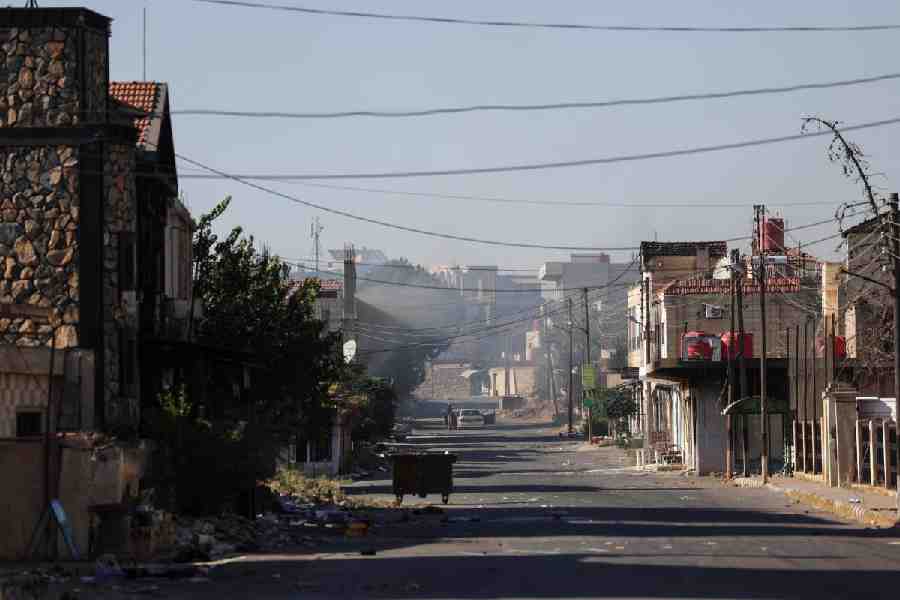 |
| Small wonder: A scientist holds up a sheet of graphene (circled) |
Recent research in the US found that nanomaterials such as graphene may be toxic to humans but city scientists beg to differ. Chemists at the Indian Institute of Engineering Science and Technology (IIEST) in Shibpur — formerly called Bengal Engineering and Science University (Besu) — showed that graphene may not be toxic as humans have been consuming it for thousands of years.
Any roasted chicken contains graphene oxide particles (those delicious crispy bits). It may be concluded that in the land of tandoori chicken people ingest a fair amount of graphene.
Sabyasachi Sarkar, an emeritus professor at IIEST’s chemistry department, and his postdoctoral student Manav Saxena have showed that consuming all that roast chicken didn’t seem to have any deleterious impact on human health. The work was published online in the journal RSC Advances at the end of last month.
“Humans have been consuming food roasted over an open fire for more than 10,000 years, ever since the discovery of fire. Our analysis shows that when food is prepared this way nano carbon materials, including graphene oxide, get lodged in the food, leading to their involuntary consumption. This tolerance indicates that we have achieved adequate immunity to such nano carbon materials,” says Sarkar, who joined IIEST in 2012 after spending 35 years at the Indian Institute of Technology (IIT), Kanpur.
 |
| A molecular view of graphene |
One of the immediate provocations for the IIEST scientists to carry out the study were recent concerns about the biosafety of graphene. A study by a team of biologists, engineers and material scientists at Brown University in the US found last year that graphene might be toxic to humans. Their study, published in a top-notch journal, indicated that the jagged edges of graphene, regarded as an incredible material with near-magical properties since it was first isolated in a lab a decade ago, can rupture the cells or tissues as they are sharp and hard.
“Our study shows is that there could be ways to produce graphene in a safe manner,” says Sarkar. They also showed that graphene oxide is formed when plant matter is charred and this plant ash is used in many medicines, including gripe water, which is used to treat stomach ailments in small children.
“This is an interesting study, no doubt,” says Alok Dhawan, director of the Institute of Life Sciences at Ahmedabad University. Dhawan, an expert on the toxicity of nanomaterials, says that what seems to be key here is the way the material is prepared.
A member of an expert group set up by the Indian Council of Medical Research, Dhawan pointed out that nanoparticles of gold, mercury and lead are used in ayurveda formulations. But, while the presence of such nanomaterials is benign in some, others may be toxic. “Lack of standardisation is a key issue,” he says.
Very pure forms of graphene and other nano carbon materials — obtained by materials scientists for diverse applications in the electronics industry — are very hard, water repelling and have sharp edges that can damage cells and tissues. “Such materials are not suitable for biological applications,” says Sarkar.
On other hand, certain impure forms of nano carbon materials are a chemist’s delight. They exploit the surface defects of these tiny materials and attach different chemical groups to them, making them soft and soluble in water.
Sarkar certainly knows it well. About two years ago, Sarkar and his team prepared carbon nano onions (made from a few sheets of graphene bunched together) and demonstrated their safety and potential to be used as an imaging tool.
In a study that appeared in the journal Small in 2011, Sarkar, who was then at IIT Kanpur, fed these tiny carbon onions — tagged with fluorescence — to fruit flies. The insects not only survived the continuous feeding of carbon nano onions but also and in fact passed them on to progenies — which went through the complete life cycle of being eggs, larvae, pupae and adult fruit flies. When the feeding was discontinued, the insects excreted the carbon nano onions completely. In a similar experiment, they illustrated how these carbon nano onions move safely through the food chain. The researchers fed carbon nano onions to a colony of E. coli bacteria, which was later devoured by worms. Both sets of organisms tolerated the presence of the carbon nano onions in their bodies and disposed of them subsequently when the feeding was stopped.
This clearly indicates that certain nano carbon materials are safe and can be used for biological applications, says Sarkar. “At the same time, we are not saying that all nanocarbons are non-toxic,” cautions Sarkar.
When it comes to toxicity of nanomaterials, the jury still seems to be out.











